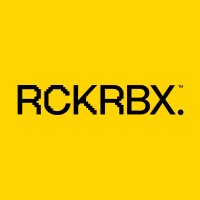What Do Renters Want? Demand-Side Data Holds The Key That Developers Have Been Looking For

To make well-informed decisions, multifamily developers have traditionally relied on supply-side data, or the historic performance, population, demographics and densities of a given market.
This data evaluates relevant indicators that provide a general overview of market preferences for multifamily buildings. However, it prevents developers from understanding what market factors are causal versus coincidental, leading to what is essentially a “guessing game” of how to program a building according to what tenants actually want.
This has left owners and developers thinking about one thing: What really drives tenant demand?
RCKRBX, a software as a service CRE platform, aims to help fill this data gap by helping CRE developers understand the nuances behind tenants’ wants, needs and expectations before planning out a multifamily development.
“While supply-side data is helpful from a contextual standpoint to further understand how populations within a market have performed, it doesn't help you understand why those things have happened,” RCKRBX Chief Operating Officer James Moore said.
To figure out what tenants truly want and require from their living spaces, demand-side data, or data that forecasts market shifts from a tenant-based perspective, is a key aspect of due diligence that the industry should utilize to better align with its end users, Moore said.
RCKRBX sources its demand-side data from multiple resources such as building lists and surveys conducted online, as well as via direct text engagement, social media recruitment and telephone polling.
With this data, the firm can “predict not only where demand is today in a given market but where it's going based on the priorities and values that renter populations hold and use to make decisions,” Moore said.
This means thinking about renters' preferences, attitudes and behaviors as the leading indicators of where demand stands in markets across the country.
“The comps and market studies that have been used in the past to measure market performance are strictly retrospective and don't account for the tenant's attitude or disposition toward certain building features," he said.
Down to the ZIP code, RCKRBX breaks down prospective renter demographics and preferences into a variety of socioeconomic categories such as age, income level, marital status and education. Developers can hone in on this raw data even further by selecting their target demographic from the sample and analyzing its preferences for certain amenities, unit mixes and sizes, rental rates, and finishes such as flooring and countertops.
All of these driving factors aren't supported by supply-side data alone. When demand-side data is paired with supply-side data, developers gain a “much-needed” holistic approach to multifamily development, Moore said.
“Once developers understand this baseline, they can use that as a focusing lens to then look at all these contextual data points and align their programmatic elements around what they see in the market,” RCKRBX President and CEO Michael Broder said.
Programmatic elements — unit mix and type of amenities, in particular — have shifted in the past three years due to pandemic-induced tenant behavioral shifts. Before the pandemic, tenants were looking for highly amenitized buildings but were willing to sacrifice on the size of the unit.
Market conditions, however, have since shifted in favor of more spacious units because tenants are spending more time in their apartments due to the influx of remote and hybrid work. In fact, RCKRBX often finds that many tenants are willing to pay a premium for units that match their requirements and wishes, ultimately increasing net operating income and investment returns — something that may be music to developers’ ears.
“It’s clear that today’s tenants are now looking for larger units, in addition to these fully amenitized spaces, because they don't need to be tethered as closely to their jobs,” Broder said. “People are migrating out of urban markets into more suburban markets, and tenants are now also residing in multifamily complexes for longer periods of time. So they’re demanding more, namely buildings in which they can live, work and play, surrounded by neighborhoods that allow for the same.”
Broder said that in a post-pandemic market, the industry has to understand that there is a permanent class, or perhaps even multiple generations, that aren't aspiring to homeownership at the same rates the previous generations did, making for a very powerful renter audience for years to come.
Developers who are armed with that insight have a tremendous advantage over those that are just relying on supply-side information and gut intuition about a market to understand what they should build, he said.
“The voice of the end user will continue to be imperative when constructing a new building or retrofitting an existing structure,” Broder said. “Understanding their voice enables developers to stress-test their assumptions, something the industry has not historically been able to do — and what it desperately needs.”
This article was produced in collaboration between RCKRBX and Studio B. Bisnow news staff was not involved in the production of this content.
Studio B is Bisnow’s in-house content and design studio. To learn more about how Studio B can help your team, reach out to studio@bisnow.com.

